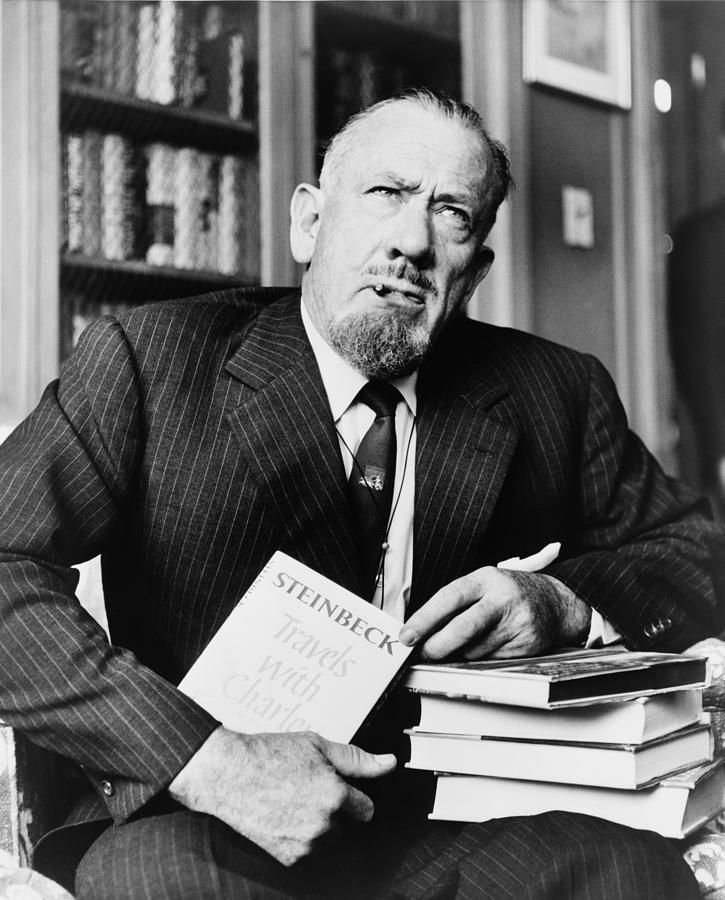John Steinbeck, of German origin, was born on February 27, 1902, in the state of California, USA. He is a child of a poor, windlass family. Like his peers, he worked as a farmer at a young age. After graduating from Salinas High School in 1919, he began to study at Stanford University. When he enrolled at Stanford University to study English literature at the age of seventeen, he had already started dreaming of becoming a professional writer.
“I want to learn people,” he said to the dean of the medical department, to take a course in which cadavers were cut into pieces and examined. It was clear that the dean was indifferent and Steinbeck’s application was reversed. However, he was able to complete his education at intervals between 1920 and 1926. In order to continue his education life, he worked as an apprentice in works such as masonry and painting, and sometimes as an apprentice with pharmacists.
Steinbeck, who has liked to write since his childhood, began to write his experiences in a realistic language. The most mentioned subjects of this famous writer were the lives of workers and windlasses, the difficulties they faced, their relationships, and living conditions.

In 1929, he published his book, Cup of Gold. He released his novel, In Dubious Battle, in 1936 which reflects the strikes of agricultural workers with a Marxist perspective. In 1937 he released Perhaps his best-known book, Mice and Men. I would like to briefly mention about this novel.

Considering the devastating, shocking consequences of the economic depression in America in 1929, the desperation of the characters in the novel becomes more meaningful. Social and economic problems were the burning stories at that time ,So he mentioned them effectively. The wild west shows once again its ugly face. In this novel he deeply criticized The dark system and the economic siege in America.
In an interview with The New York Times, writer John Steinbeck says about this novel: “I was a bindle stiff myself for quite a spell. I worked in the same country that the story is laid in. The characters are composites to a certain extent. Lennie was a real person. He’s in an insane asylum in California right now. I worked alongside him for many weeks. He didn’t kill a girl. He killed a ranch foreman. Got sore because the boss had fired his pal and stuck a pitchfork right through his stomach. I hate to tell you how many times. I saw him do it. We couldn’t stop him until it was too late.”

Crooks, a black groom, left alone in a separate place on the farm. Crooks has established a separate world in solitude. He is excluded because he is black. It is an indicator of black-and-white discrimination in America in the novel.
This novel tells how a person does unrequited favor, how rich people see themselves above others, and lose their humanity to show this. Also this novel covers the topics like, how racism is embodied, how good people can make big mistakes, how hopes keep people alive.
In his works, Steinbeck expressed the California region, it was his own home as he born and grown here. He knew this region very well, the ordinary people, among whom he lived, the lives of agricultural workers. Especially with the works he wrote in the 1930s, he expressed the problems of the masses who experienced the effects of the world economic crisis.

In 1940 he wrote The Grapes of Wrath, w. He got recognition for his work and achieved great success. Millions of people read and admired his book. Moreover filmmakers liked it so much that they took his book to the cinema as well. Describing the difficulties of workers migrating to California during the Dust Bowl period, this sad story deeply affected America crushed under the Great Depression. In February 1940, the novel printed its eleventh edition, selling almost half a million.
Over the next eighty years, The Grapes of Wrath has sold more than fifteen million copies, and about fifty thousand readers in America continue to buy it every year. The famous writer, who criticized society in his works and questioned the economy in America, wrote more ideological novels during the Second World War.
Steinbeck took on the image of a struggling writer who grew in absence. However, in the 1920s, he was getting a monthly allowance of $ 50 from his father, who inherited Monterey County.
According to biographer Jay Parini in 1994, “Many people think that John Steinbeck came from a poverty-like family and was like workers in the The Grapes of Wrath, but when his family was in Salinas, he lived in a beautiful Victorian-style house where the servants worked.”

Finally, in 1962 John Steinbeck got the Nobel Prize for Literature for his successful life and contributions to literature. He died in New York in 1968.












